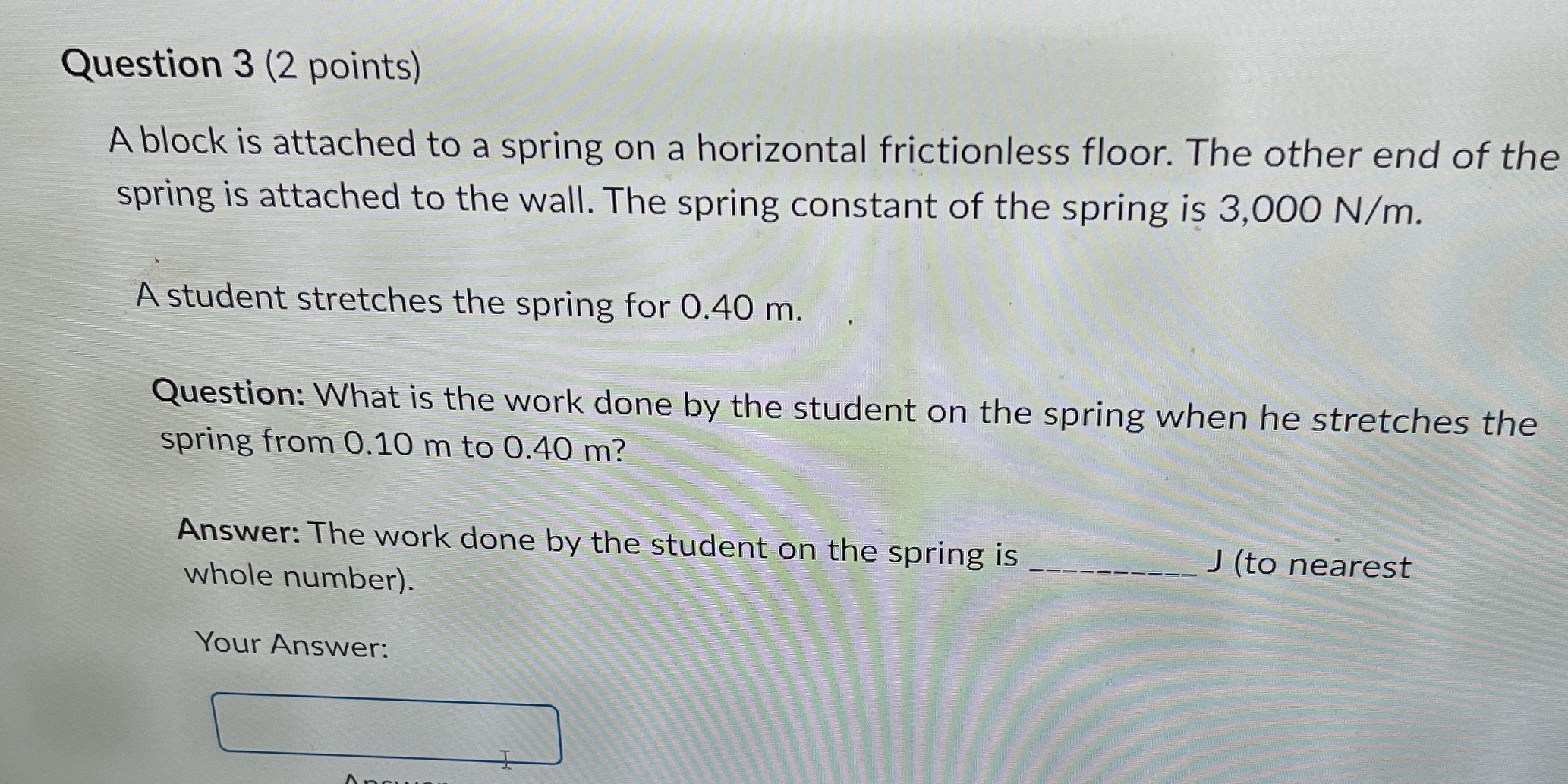What is the work done by the student on the spring when he stretches the spring from 0.10 m to 0.40 m?

Understand the Problem
The question is asking to calculate the work done on a spring when it is stretched from an initial position of 0.10 m to a final position of 0.40 m, given the spring constant. This involves applying Hooke's Law and calculating the energy associated with stretching the spring.
Answer
The work done on the spring is $135 \, J$.
Answer for screen readers
The work done by the student on the spring is 135 J.
Steps to Solve
- Identify the given values
We know the following:
- Initial position ($x_i$) = 0.10 m
- Final position ($x_f$) = 0.40 m
- Spring constant ($k$) = 3000 N/m
- Calculate the change in displacement
The change in displacement ($\Delta x$) can be calculated using:
$$
\Delta x = x_f - x_i
$$
Substituting in the values:
$$
\Delta x = 0.40, m - 0.10, m = 0.30, m
$$
- Use the work done formula for a spring
The work done ($W$) on the spring when stretched can be calculated using the formula:
$$
W = \frac{1}{2} k (\Delta x)^2
$$
Substituting the known values:
$$
W = \frac{1}{2} \cdot 3000, N/m \cdot (0.30 , m)^2
$$
- Calculate the final work done
Now, perform the calculations:
$$
W = \frac{1}{2} \cdot 3000, N/m \cdot 0.09, m^2
$$
$$
W = 1500, N/m \cdot 0.09, m^2 = 135, J
$$
The work done by the student on the spring is 135 J.
More Information
The work done on a spring represents the energy stored in it when stretched or compressed. According to Hooke's Law, the force required to stretch the spring is proportional to the distance stretched. This energy can be released when the spring returns to its original position.
Tips
- Confusing initial and final positions: Make sure to correctly identify $x_i$ and $x_f$.
- Incorrect formula usage: Remember to use the correct formula for work done on a spring, which involves squaring the displacement.
AI-generated content may contain errors. Please verify critical information